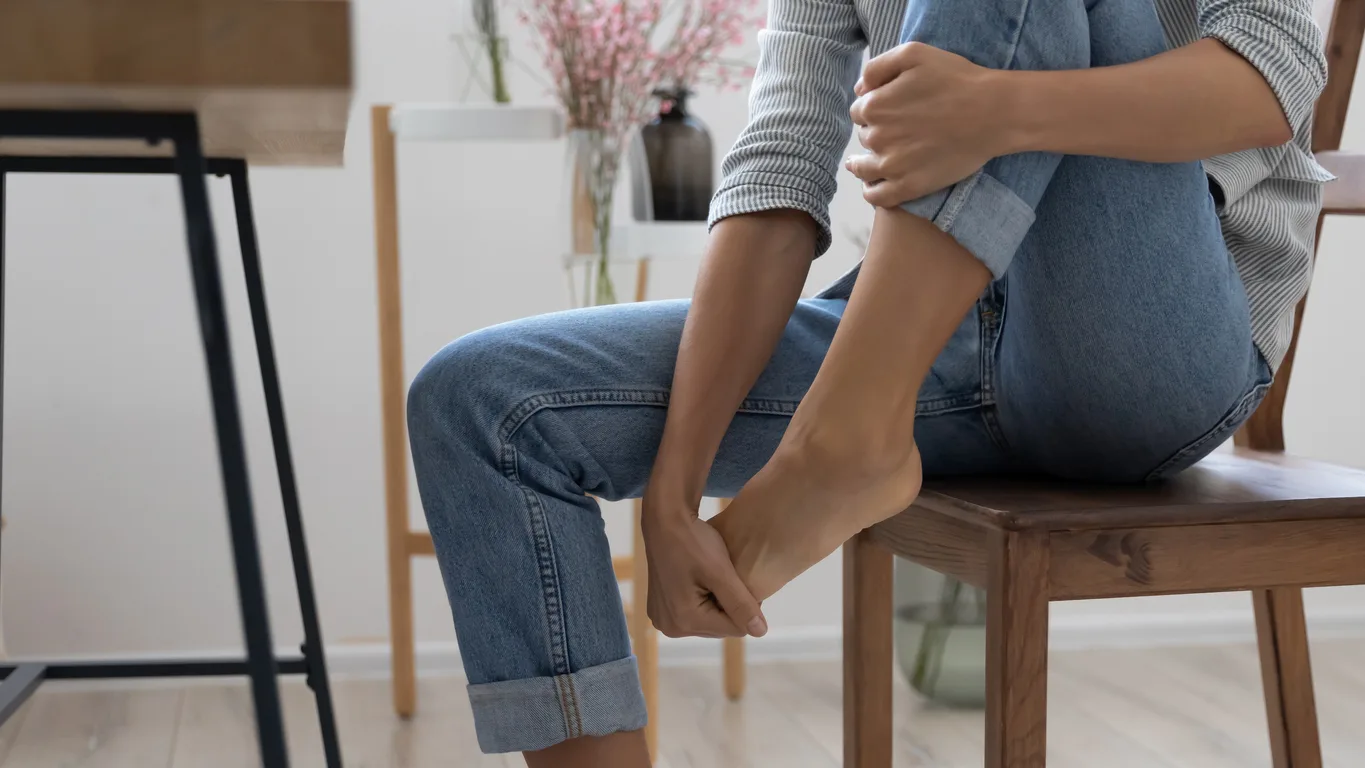Medial Tibial Stress Syndrome, more commonly known as Shin Splints, is a common condition marked by pain in the shins when walking or running. There is some debate within the medical community around the exact terminology, but generally speaking, it is an over-use injury as a result of repetitive running on hard surfaces.
Chartered Physiotherapist Conor O’Brien is here to tell us more about shin splints and share some tips on how to treat and prevent them. Read on to find out more!
What are the symptoms of shin splints?
Most commonly shin splints present as a dull ache on the inside lower half of your shin bone, as far as your ankle on one or both of your legs. There is sometimes oedema or swelling but not always, and most often it is particularly painful when starting a run and immediately afterwards.
Who does shin splints affect?
Firstly, there are a number of different conditions that could cause similar pain to shin splints. A physiotherapist will be able to rule in or out other possible injuries through a physical examination and your history.
Secondly, although shin splints are a common running injury, you don’t have to be a runner to develop them. Any sport or activity that involves your feet repetitively impacting on a hard surface can be a risk factor for shin splints. Outside of runners it is often seen in people who play football, jumping sports and dancers.

What are the risk factors for developing shin splints?
There are a number of risk factors for developing shin splints, some of which you can prevent and some which you can’t. Risk factors include:
Anatomy & physiology: Anatomical and physiological factors play a role in shin splints such as leg length discrepancies or having flat or overarched feet.
Gender: Women are also at a higher risk of developing shin splints than men due to hormonal, nutritional and biomechanical factors.
Training conditions & surface: Factors to also consider are training conditions such as cold weather; this can increase the risk of shin splints and injury generally. Running surfaces such as grass, or a running track can lower the impact on your legs. Proper supportive and cushioned footwear will act as a shock absorber.
Having said all of the above however, the most common causes of shin splints involve training errors such as over-training either in intensity (i.e. trying to run too fast or too far) or frequency (i.e. running too often), and poor recovery.
Prevention is the best form of treatment for shin splints, so limiting as many risk factors as possible will greatly help to reduce your risk of developing shin splints.
How can I prevent shin splints?
There are a number of measures you can take to prevent shin splints developing, including:
Wearing proper footwear: Wear supportive shoes with good shock absorption, especially when engaging in physical activities like running or high-impact sports.
Focusing on gradual progression: If you’re starting a new exercise program or increasing the intensity of your current regimen, do so gradually to give your body time to adjust to the new demands.
Cross-training: Incorporate low-impact activities like swimming, cycling, or using an elliptical machine to reduce the stress on your shins while still maintaining your overall fitness.
Strength training: Focus on strengthening the muscles in your lower legs, including the muscles at both the back and front of the leg, to help provide better support for the shinbone.
Improving flexibility: Stretch your calf muscles regularly to maintain flexibility of the soft tissues.
Ensuring proper technique: Whether you’re running, jumping, or engaging in other activities, make sure to use proper form and technique to minimize stress on your lower legs.
Prioritising rest & recovery: Allow your body sufficient time to rest and recover between workouts, especially if you start to feel discomfort in your shins.
Considering your surface: When running or exercising, try to choose softer surfaces like grass or a running track instead of hard pavement, as this will reduce shock impact in your legs.

How can I treat shin splints?
Generally, relative rest is the first course of action once a diagnosis of shin splints has been established. This could mean reducing the intensity, frequency or duration of your runs, substituting walking or other aerobic exercises instead of running or cutting out running entirely for a short period of time. These decisions should be decided based on consultation with a physiotherapist.
There are a number of treatments that have been shown to be effective in managing shin splints. Using ice for pain management, gait re-education or training the way you run, stretching and strengthening the muscles and tissues around the shins, or even changing your footwear have all been shown to help manage shin splints. A Chartered Physiotherapist will be able to evaluate your condition and establish the best form of treatment for you, so be sure to book a physio appointment at this stage.
Developing shin splints is not necessarily a death sentence for running, although some people do choose to stop as a result. After a period of initial rest, a gradual return to running under the supervision of a medical professional has been shown to be very effective in managing shin splints and getting people back to running.
If you need to get treated for shin spints, you can book an appointment with one of our Chartered Physiotherapists here.











